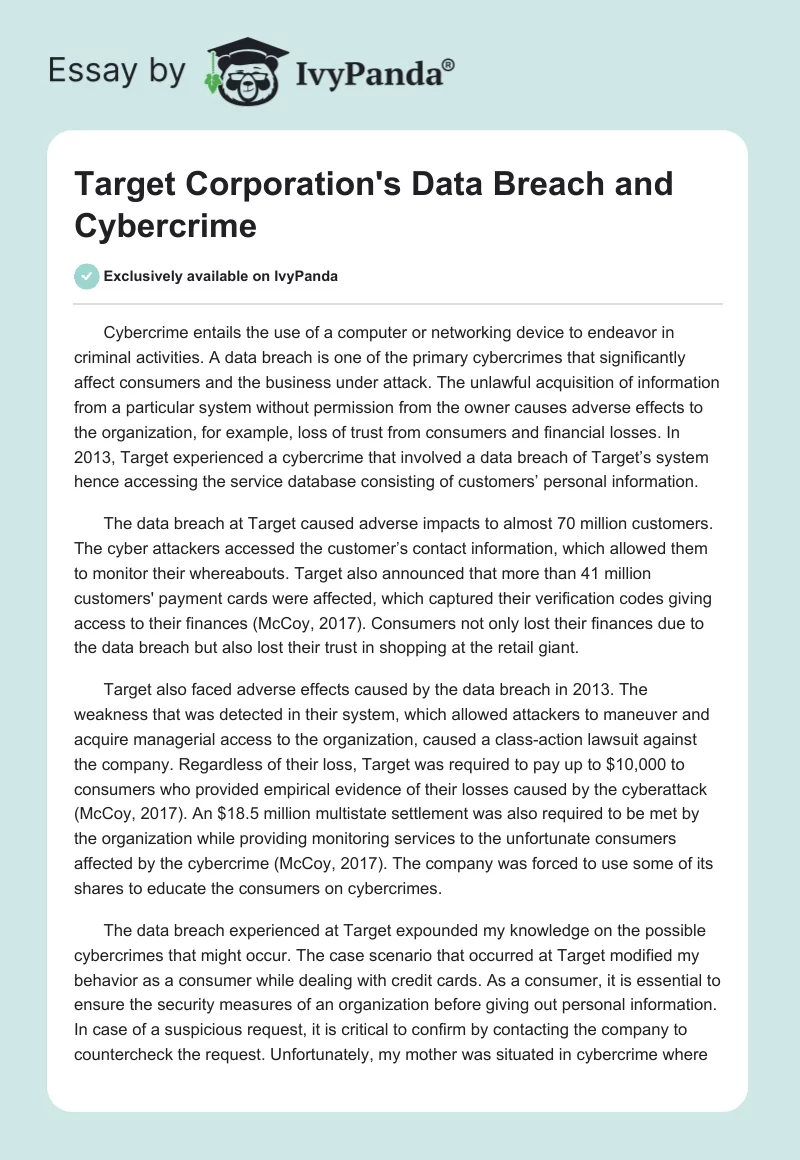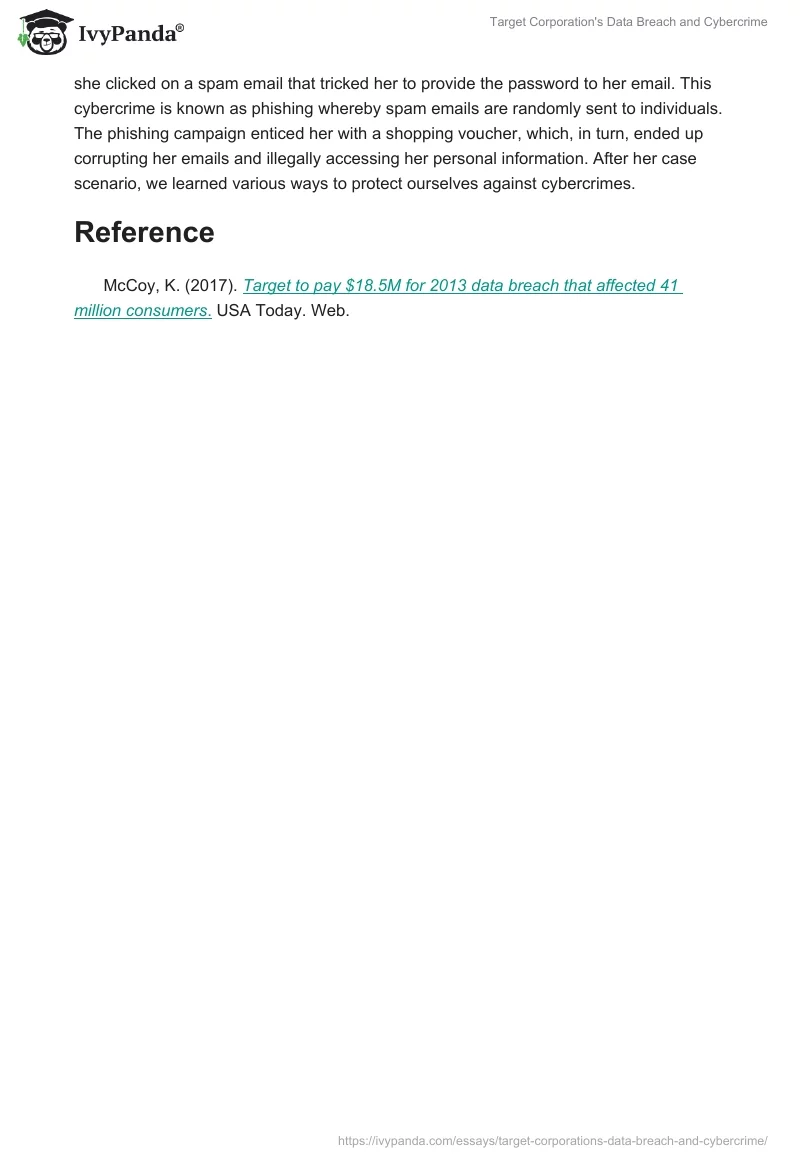Cybercrime entails the use of a computer or networking device to endeavor in criminal activities. A data breach is one of the primary cybercrimes that significantly affect consumers and the business under attack. The unlawful acquisition of information from a particular system without permission from the owner causes adverse effects to the organization, for example, loss of trust from consumers and financial losses. In 2013, Target experienced a cybercrime that involved a data breach of Target’s system hence accessing the service database consisting of customers’ personal information.
The data breach at Target caused adverse impacts to almost 70 million customers. The cyber attackers accessed the customer’s contact information, which allowed them to monitor their whereabouts. Target also announced that more than 41 million customers’ payment cards were affected, which captured their verification codes giving access to their finances (McCoy, 2017). Consumers not only lost their finances due to the data breach but also lost their trust in shopping at the retail giant.
Target also faced adverse effects caused by the data breach in 2013. The weakness that was detected in their system, which allowed attackers to maneuver and acquire managerial access to the organization, caused a class-action lawsuit against the company. Regardless of their loss, Target was required to pay up to $10,000 to consumers who provided empirical evidence of their losses caused by the cyberattack (McCoy, 2017). An $18.5 million multistate settlement was also required to be met by the organization while providing monitoring services to the unfortunate consumers affected by the cybercrime (McCoy, 2017). The company was forced to use some of its shares to educate the consumers on cybercrimes.
The data breach experienced at Target expounded my knowledge on the possible cybercrimes that might occur. The case scenario that occurred at Target modified my behavior as a consumer while dealing with credit cards. As a consumer, it is essential to ensure the security measures of an organization before giving out personal information. In case of a suspicious request, it is critical to confirm by contacting the company to countercheck the request. Unfortunately, my mother was situated in cybercrime where she clicked on a spam email that tricked her to provide the password to her email. This cybercrime is known as phishing whereby spam emails are randomly sent to individuals. The phishing campaign enticed her with a shopping voucher, which, in turn, ended up corrupting her emails and illegally accessing her personal information. After her case scenario, we learned various ways to protect ourselves against cybercrimes.
Reference
McCoy, K. (2017). Target to pay $18.5M for 2013 data breach that affected 41 million consumers. USA Today. Web.


